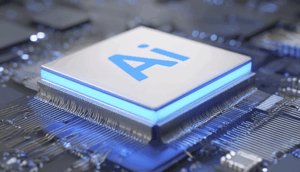In the rapidly evolving landscape of industrial automation and artificial intelligence, robust and reliable data communication infrastructure is paramount. CC-Link IE, a high-speed industrial Ethernet network, plays a crucial role in enabling seamless data transfer and real-time communication between various components within an AI-driven industrial environment. This article delves into the intricacies of CC-Link IE, its importance in supporting AI infrastructure, and the critical role of specialized data communication cables in ensuring optimal performance.
CC-Link IE, standing for Control & Communication Link Industrial Ethernet, is designed to meet the stringent demands of modern industrial applications. Its deterministic communication capabilities allow for precise control and synchronization of machines and processes, essential for AI-driven automation. Unlike standard Ethernet, CC-Link IE utilizes a token-passing architecture, guaranteeing a defined communication cycle time. This determinism is crucial in applications where real-time performance and predictable data delivery are non-negotiable. The high bandwidth provided by CC-Link IE enables the transmission of large volumes of data generated by sensors, actuators, and other devices, facilitating AI algorithms to analyze and optimize processes based on real-time insights.
The physical layer of a CC-Link IE network relies on robust and high-quality data communication cables. These cables are specifically engineered to withstand the harsh conditions prevalent in industrial settings, including extreme temperatures, vibrations, electromagnetic interference (EMI), and exposure to chemicals. Shielded twisted-pair (STP) cables are commonly employed to minimize EMI and ensure signal integrity, preventing data corruption and communication errors. The cables must also adhere to stringent industry standards, such as those defined by the CC-Link Partner Association (CLPA), to guarantee interoperability and compatibility with CC-Link IE devices. Proper cable selection and installation are critical for maintaining the reliability and performance of the entire network.

Furthermore, the choice of cable connectors and terminations significantly impacts the overall system performance. Connectors must provide a secure and reliable connection, minimizing signal loss and preventing accidental disconnections. Industrial-grade connectors with robust locking mechanisms are preferred to ensure continuous operation in demanding environments. Correct termination techniques, such as proper cable stripping and crimping, are essential for minimizing signal reflections and maintaining impedance matching. Incorrect termination can lead to signal degradation, reduced data rates, and network instability. Regular inspection and maintenance of cables, connectors, and terminations are crucial for preventing failures and ensuring long-term system reliability.
The future of CC-Link IE in AI infrastructure is promising, with ongoing advancements in cable technology and network protocols. As AI algorithms become more sophisticated and require increasingly larger datasets, the demand for higher bandwidth and lower latency communication will continue to grow. Manufacturers are continuously developing new cable designs with improved shielding, higher temperature ratings, and enhanced flexibility to meet these evolving needs. Moreover, the integration of CC-Link IE with other technologies, such as wireless communication and cloud computing, is opening up new possibilities for remote monitoring, predictive maintenance, and data analytics in industrial applications. By investing in high-quality data communication cables and staying abreast of the latest technological advancements, businesses can ensure that their AI infrastructure is robust, reliable, and ready to meet the challenges of the future.